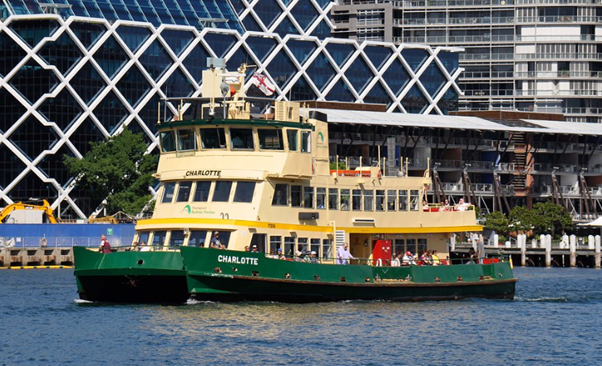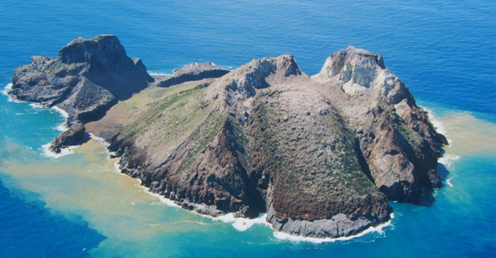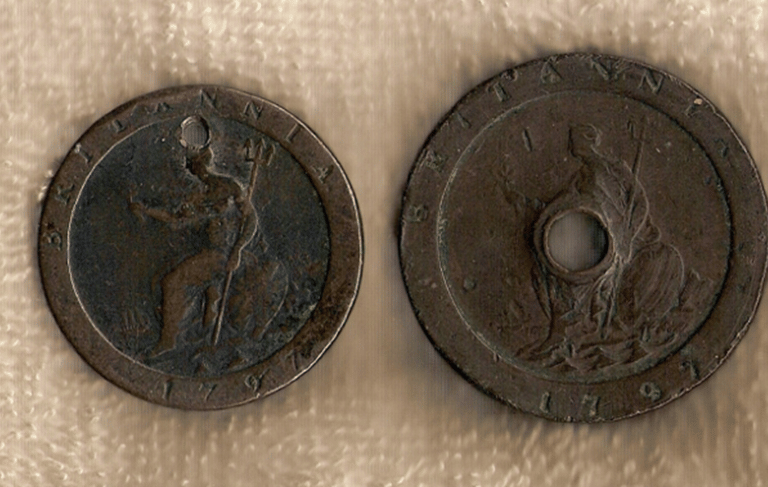A Sydney Ferry and the Remarkable Charlotte Marlar
The 'Charlotte', a First Fleet-class ferry which shuttles passengers around Sydney Harbour, is named after a Botany Bayman that was in turn was named after the owner’s wife, Charlotte Marlar. Sydneysiders who watch the 'Charlotte' come into Circular Quay are unaware that she honours a remarkable woman who negotiated with leading industrialists and financiers of her time.
Gary L. Sturgess
12/17/20245 min read
The original Charlotte was one of the First Fleet transports, carrying out 88 male and 20 female convicts to the proposed penal colony in 1787-88. Having unloaded her human cargo, she sailed from Port Jackson in May 1788, bound for China, making her way north through the unchartered waters of the mid-Pacific. On sailing out of Sydney Harbour, her captain, Thomas Gilbert, wrote:
‘I now launched into the Pacific Ocean, with an extensive space of sea before me, through which, as the track I was to pursue had never been explored, there was no chart to guide me, and with the dangers of which I was entirely unacquainted. Whether I should be able to procure any of those refreshments such a passage may render needful, or what obstructions might arise to impede my progress, was equally a matter of uncertainty. The attempt, in a ship of so small a size, and with a crew not exceeding thirty in number, several of whom were boys, carried with it a discouragement unknown to navigators whose purpose it is to explore new regions, and who are properly prepared for it.’ [1]
On their way north, Gilbert discovered Matthews’s Rock, just to the south of the New Hebrides (now Vanuatu): it was named after William Matthews, the owner of the Charlotte, and it is still known as Matthew’s Island today.


He also named Charlotte’s Bank, some days to the north-east of Vanuatu, and the Gilbert Islands, with various islands within that group being named the Marlar Islands, and Charlotte and Mathews Islands. All of these have since had a name change, although Kiribati, the modern name for the Gilberts, is the local pronunciation of ‘Gilbert’.
William Matthews was a London merchant, who was (among other things) the principal financer of and agent for Matthew Boulton, the Birmingham entrepreneur who formed a partnership with James Watt in 1775 and oversaw the commercial exploitation of his steam engine. Boulton became a close friend of William Matthews and was a witness at his wedding to Charlotte Marlar in 1776. Matthews died at James Watt’s home in 1792, and Watt was one of his executors.
Boulton had financial problems for many years, largely caused by rapid expansion of his business interests and the associated need for capital. Matthews spent a great deal of time negotiating with financiers, and at various times, he was heavily invested himself. The Charlotte was sold on her return to London in 1789 at a time when his relationship with Boulton was under strain and he was in need of capital.
Along with Boulton and Watt, he was one of the partners in the Albion flour mill, the first mill in the world to be powered by steam: five storeys high, it was the earliest industrial enterprise of any scale in the capital, and the basis for William Blake’s line in his poem ‘Jerusalem’ about ‘dark satanic mills’. (See Catspaw, ‘The First Fleet and London’s Dark Satanic Mill.)
Boulton & Watt was not his only client, and he was brought in a number of times as an administrator in business insolvencies and served as an arbitrator in court cases at King’s Bench.
When he passed away in 1792, Boulton worried what would happen if Matthews' executors called in his loans, but his widow decided to take over the management of the firm herself. When she reinsured their counting house later that year, she did so as ‘Charlotte Matthews, merchant’. William had been a member of Lloyd’s of London, and she was elected a member in his place.
She renewed the agency arrangement with Matthew Boulton, and advanced him even more money so he could fulfil a contract with the government for stamping copper coinage. By July 1797, the total amount of the debt was £22,609 (around £4.5 million today).
She relied heavily on clerks, as her husband had employed, but she was deeply involved in the business, personally corresponding with Boulton and Watt, and meeting with prominent figures in London society, such as the Chief Justice. One historian has described the business during her years as follows:
We know something, but not all, of her methods from ledgers at the Bank of England that record her account there from 1793 to 1799 and from the surviving part of her correspondence with the Birmingham partnership of Boulton & Watt. Boulton & Watt, however, was but one of many of Charlotte’s customers and the names of major London merchant houses and traders recur in the pages of her account at the Bank of England. The clientele was remarkable – prosperous, ambitious, well-connected – and unlikely to give quarter to those they deemed weak. The ten years during which she ran this high-risk finance business on her own were extremely difficult ones: the country was at war with France, there were very poor harvests, unrest at home and economic crises, but Charlotte was still in business, financing Boulton & Watt and dealing with her other customers up to her death in 1802. [2]
In December 1799, she wrote to Boulton, advising him that she had that day received an order from Mr Long at the Treasury, for 14 casks of halfpennies and 12 casks of farthings to be shipped to New South Wales. She replied that she would pay the earliest attention to this order, and that she had now on her books 400 orders without the hope of supplying one of them until the weather improved.
These small denomination coins had been ordered by Governor Hunter to create a local currency and, for the first time, to pay the soldiers of the NSW Corps in something other than tobacco. As Hunter explained to the Home Secretary: ‘The circulation of this money will be attended with the most comfortable accommodation to the people in their various dealings with each other’. [3]
They were stamped by a Boulton & Watt steam engine and arrived on HMS Porpoise and the Royal Admiral in 1800.
Charlotte Matthews passed away on 9 January 1802, aged 43. The business was sold to the partnership of M. R. Boulton, J. & G. Watt and Company, sons of the founding partners, and they continued to trade out of the same premises using the same staff.
____________
[1] Thomas Gilbert, Voyage from New South Wales to Canton in the Year 1788, London: Debrett, 1789, p. 4.
[2] C. Wiskin, ‘Accounting for Business: Financial Management in the Eighteenth Century’, in Anne Laurence et al (eds.), Women and their Money 1700-1950, Routledge, 2009, p. 78.
[3] Hunter to Portland, 10 November 1799, Historical Records of Australia, 1:2, p. 394.


Matthews Island, to the south of Vanuatu.


Two of the copper coins stamped by Boulton & Watt, sent to NSW in 1799.
Contact us
Connect with us
Botany Baymen acknowledges the traditional custodians of country throughout Australia and respects their connection to land, water and community.
© Botany Baymen 2024. All rights reserved.
You may download, display, print and reproduce this content for your personal or non-commercial use but only in an unaltered form and with the copyright acknowledged.

